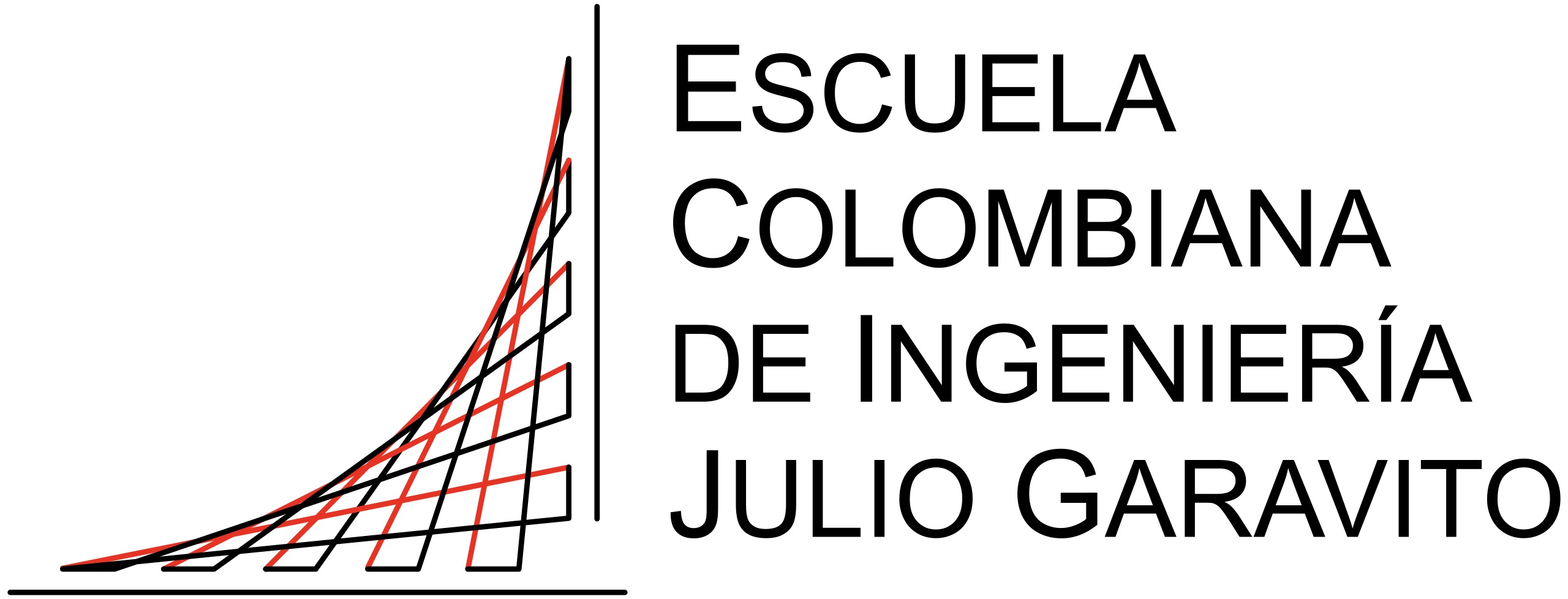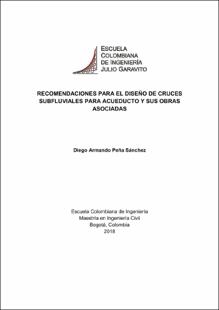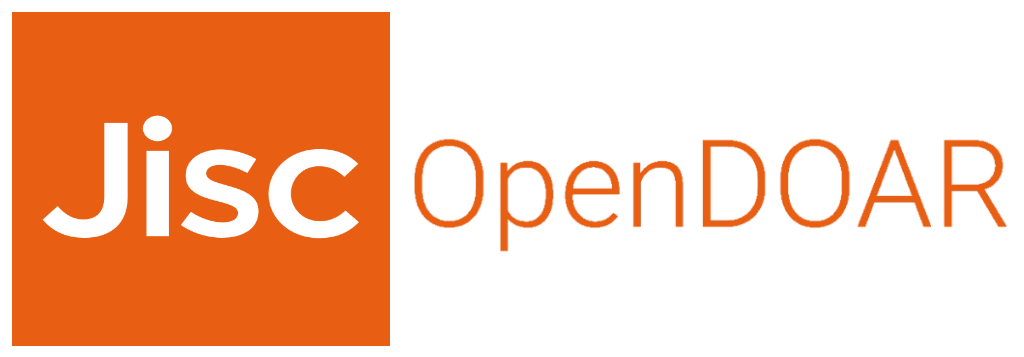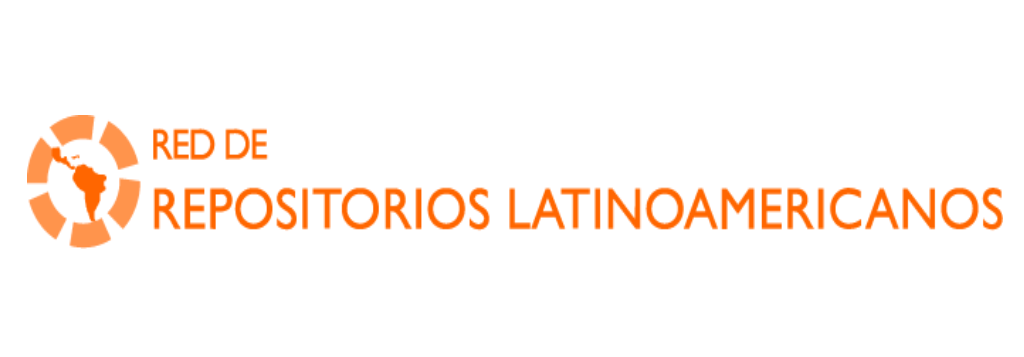Recomendaciones para el diseño de cruces subfluviales para acueducto y sus obras asociadas
Trabajo de grado - Maestría
2018
Escuela Colombiana de Ingeniería Julio Garavito
Currently many new water supply projects are being executed in Colombia. In this sense, the present work is concerned to recognize that sometimes the layout is in the obligation to cross a body of water or river, which requires the construction of a line under the water body, this with the object to alter the channel as little as possible and keep the banks protected. In the same way, this study is born of the need to respond to the question: what would be the best technology to use? Understanding that the stage of planning of the projects that are in the public procurement portal shows an absence of certainty of what technology should be used for the projects.
The development of this research begins with an attempt to realize a typical profile of soil in the rivers of Colombia, finding a wide variety of geological formations that make up the national territory, which makes the entrusted task impossible. The following step consists in the collection and analysis of trenchless technologies named as: Horizontal Directional Drilling "HDD", Pipe Ramming, Auger Boring, Pipe Jacking and soil compaction methods. This analysis focuses on knowing the conditions under which these methods are most efficient and their limitations in terms of drilling lengths, diameters and soil types. A special chapter is devoted to the applicable types of pipe.
Once the aspects relating to the state of the art have been clarified, an extensive analysis of the applicability of the different technologies is carried out based on key decision factors, which are the soil, the diameter of the pipe to be laid and the length of the crossing. Based on this analysis, a selection manual for the use of trenchless technology for subfluvial crossings is prepared and is put into practice in a real engineering example. Actualmente se están ejecutando en Colombia muchos proyectos nuevos en acueductos. En este sentido, el presente trabajo se preocupa por reconocer que algunas veces el trazado se ve en la obligación de cruzar un cuerpo de agua o río, lo cual hace necesaria la construcción de una línea de flujo bajo el cuerpo de agua, esto con el objeto de alterar lo menos posible el cauce y mantener protegidas las orillas. De igual manera este estudio nace de la necesidad por responder a ¿Cuál sería la mejor tecnología a utilizar? Entendiendo que la etapa de planeación de los proyectos que se encuentran en el portal de contratación evidencia una ausencia de certeza de qué tecnología se debe utilizar para los proyectos.
El desarrollo de esta investigación inicia por un intento de realización de un perfil típico de suelo en los ríos de Colombia, encontrándose una amplia variedad de formaciones geológicas que conforman el territorio nacional, lo cual imposibilita la tarea encomendada. Sigue la recopilación y análisis de las tecnologías sin zanja denominadas como: Perforación Horizontal Dirigida "HDD", Pipe Ramming, Auger Boring, Pipe Jacking y los métodos de compactación de suelo. Dicho análisis se enfoca en conocer las condiciones en las cuales son más eficientes estos métodos y sus limitaciones en cuanto a longitudes de perforación, diámetros y tipos de suelo. Un capítulo especial se dedica a los tipos de tubería aplicables.
Una vez aclarados los aspectos relativos al estado del arte, se procede a realizar un análisis extensivo de la aplicabilidad de las diferentes tecnologías en función de unos factores claves de decisión, que son el suelo, el diámetro de tubería a colocar y la longitud del cruce. Con base en dicho análisis, se elabora un manual de selección de tecnología sin zanja para cruces subfluviales, el cual se pone en práctica en un ejemplo real de ingeniería
Descripción:
Metodología para la selección de una tecnología sin zanja al momento de realizar un cruce subfluvial
Título: Peña Sánchez , Diego Armando-2018.pdf
Tamaño: 4.064Mb
 PDF
PDF
 LEER EN FLIP
LEER EN FLIP
Descripción: Anexo 1
Título: Anexo 1.pdf
Tamaño: 745.6Kb
 PDF
PDF
 LEER EN FLIP
LEER EN FLIP
Descripción: Autorización de publicación
Título: Autorización .pdf
Tamaño: 148.1Kb
 PDF
PDF
Título: Peña Sánchez , Diego Armando-2018.pdf
Tamaño: 4.064Mb
 PDF
PDF
 LEER EN FLIP
LEER EN FLIP
Descripción: Anexo 1
Título: Anexo 1.pdf
Tamaño: 745.6Kb
 PDF
PDF
 LEER EN FLIP
LEER EN FLIP
Descripción: Autorización de publicación
Título: Autorización .pdf
Tamaño: 148.1Kb
 PDF
PDF

















